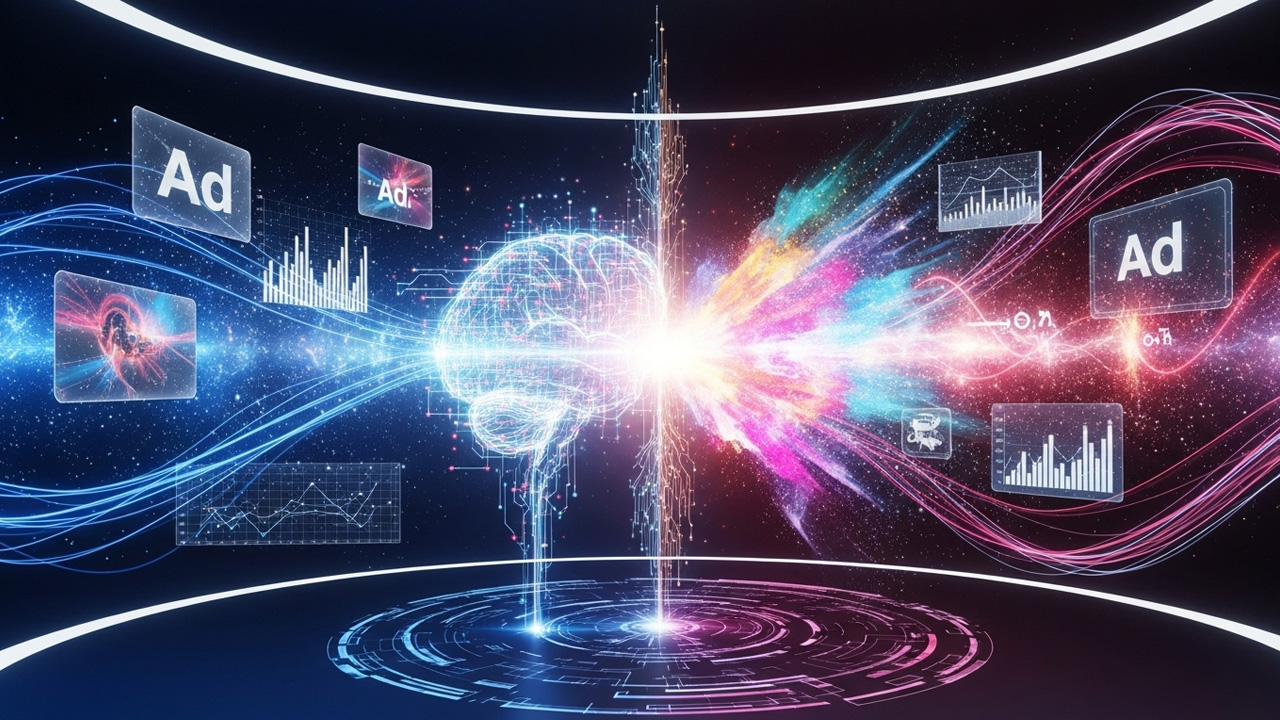Fact: Your competitor just tested 50 ad variations this week in the background before launching the winning version; while you’re still waiting on design approval for version two.
Traditional ads sit static until someone manually changes them, AI-optimized campaigns get smarter every hour—learning from every click that just happened.
Yet most marketers still rely on traditional systems.
AI doesn’t just create any generic ads. It understands psychology, decodes behavior patterns, and optimizes in real-time.
And this is exactly why Fortune 500 companies and smart marketers are making the shift.
This guide reveals exactly how AI-powered ad creation turns data into dollars, combining neuroscience, machine learning, and proven conversion tactics.
Whether you’re running a side hustle or scaling a business, you’ll discover why the smartest creators use AI to outcompete traditional advertising.
Ready to unlock this edge?
Let’s dive in.
Key Takeaways
| Section | Key Insights |
| What Are AI-Generated Ads and Why They Matter in Modern Marketing | AI ads don’t just automate — they think. Machine learning transforms creativity into conversion power. |
| The Psychology Behind High-Converting AI Ads | AI applies neuromarketing principles — decoding emotion, behavior, and motivation at scale. |
| How AI Analyzes Data to Improve Ad Conversion | Real-time A/B testing + feedback loops = continuous compounding gains in conversion rates. |
| The Technology Behind AI-Powered Ad Creation | NLP, computer vision, and predictive analytics fuel AI’s ability to create persuasive, data-backed ads. |
| Proven AI Strategies That Boost Ad Conversions | Tactics like personalization, smart bidding, and intelligent retargeting slash costs and recover lost leads. |
| Best AI Tools for Creating High-Converting Ads | Tools like Jasper, AdCreative.ai, and Pixi AI simplify end-to-end creation and optimization. |
| How to Start Using AI for Ads – Step-by-Step Framework | 3-step roadmap: research audience, set up smart structure and track & optimize with AI insights. |
What Are AI-Generated Ads and Why They Matter in Modern Marketing
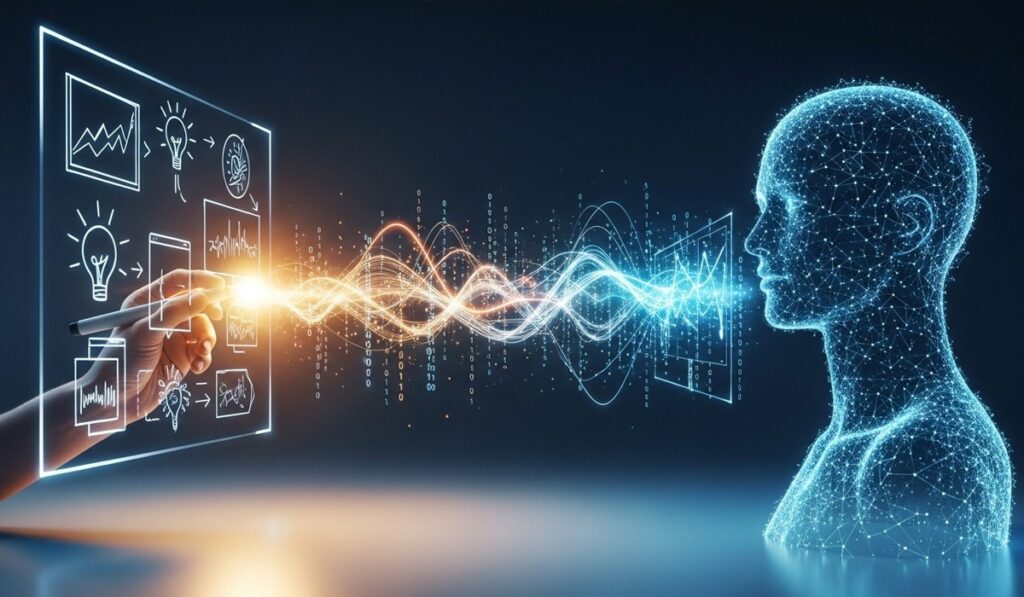
AI-generated ads use machine learning algorithms to create, test, and optimize advertising content automatically.
But here’s what separates winners from laggards.
How AI is Transforming Advertising Beyond Traditional Methods
Traditional advertising relies on creative instinct and historical data.
AI flips the script by analyzing thousands of data points simultaneously—user behavior, engagement patterns, conversion funnels, seasonal trends.
According to McKinsey, AI-driven marketing delivers 3-5x higher ROI than conventional approaches.
Key Components of AI-Generated Ads
Effective AI ad generation rests on four pillars:
- Copy Optimization: NLP algorithms craft headlines and CTAs that trigger emotional responses specific to audience demographics
- Visual Creativity: Computer vision identifies design patterns that drive engagement across different platform types
- Audience Targeting: Predictive algorithms segment users based on behavioral likelihood to convert
- Budget Allocation: Machine learning distributes spend toward the highest-performing creatives in real-time
Why AI Ads Convert Better
AI tracks micro-interactions (hover time, scroll depth, video completion rates) and instantly adjusts messaging.
If an audience segment responds better to urgency language, AI shifts the copy.
If blue buttons outperform green, that change propagates within minutes, not weeks.
Result? Advertisers see real-time A/B testing that would take traditional teams months to execute.
The Psychology Behind High-Converting AI Ads
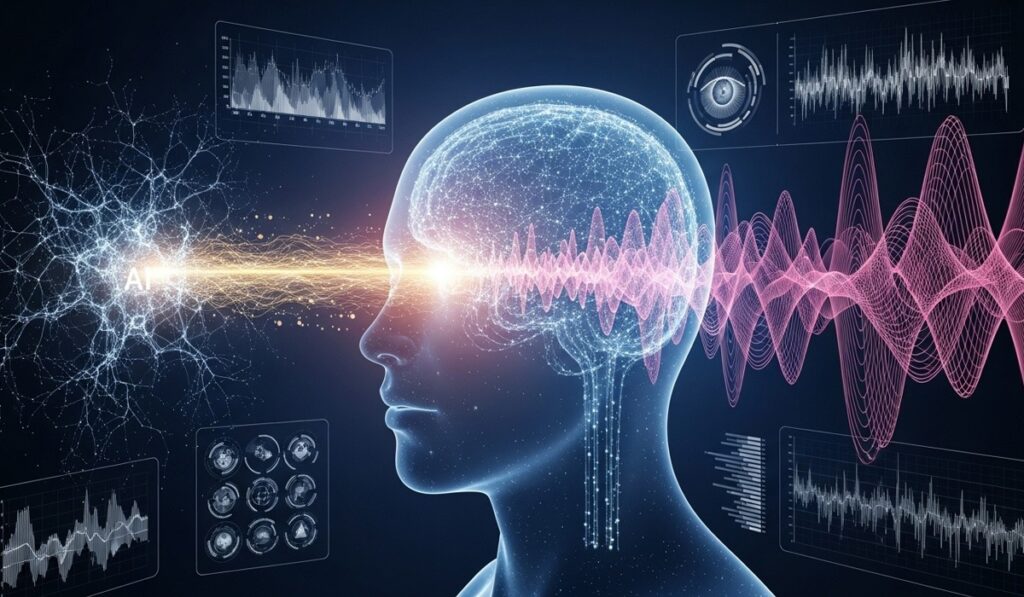
Conversion is not just about technology. It is also about tapping into human psychology.
AI has gotten incredibly good at figuring out what makes us click.
It uses data patterns to understand our hidden motivations.
This deep insight is the secret sauce for crazy-high conversion rates.
Using Predictive Behavior to Understand Audience Intent
AI watches your audience like a hawk. It tracks browsing history and purchase patterns.
Then, it uses predictive behavior modeling.
This helps AI guess what a user will do next.
Is a shopper about to convert or abandon their cart? AI knows the answer before you do.
This lets the system deliver the perfect ad right now.
The online fashion retailer ASOS implemented AI-powered product recommendations on its site and in email campaigns.
This resulted in a 75% increase in email click-through rates and a significant overall boost in customer engagement and sales.
Emotional Triggers AI Detects That Humans Often Miss
Neuromarketing research shows humans make purchase decisions emotionally, then justify them logically.
AI detects which emotional triggers work best for different segments.
Consider these findings from conversion research:
- FOMO (fear of missing out) messaging lifts conversions by 18% for limited-time offers
- Social proof language increases trust-based conversions by 25%
- Personalized naming in ad copy boosts click-through rates by 31%
AI doesn’t just know these principles—it applies them automatically, testing thousands of variations to identify the specific emotional angle that works for your audience.
Message Personalization at Scale – The Secret Behind Relevance
At-scale personalization used to be impossible.
You couldn’t write 1,000 unique ads for 1,000 audience segments.
AI makes this trivial.
Dynamic personalization makes sure each user sees ads tailored to their stage in the buyer journey.
Someone in awareness sees educational content. Someone showing purchase intent sees testimonials and pricing.
Someone who abandoned a cart sees urgency messaging with a discount.
How AI Analyzes Data to Improve Ad Conversion
AI is a data-crunching superhero for your ad spend.
It uses that data to make campaigns sharper. This continuous learning cycle is key to its winning power.
Real-Time A/B Testing – Winning Creatives Faster
Manual A/B testing is slow and a total pain. AI does this at warp speed with multi-variate testing.
It tests countless combinations of copy and creatives all at once. The system instantly shifts budget to the winning variations.
This creates statistical confidence fast.
Winning creatives surface within 48-72 hours, not 3-4 weeks.
Machine Learning Feedback Loops for Continuous Improvement
Here’s the AI advantage that compounds over time: each campaign becomes smarter.
Feedback loops mean yesterday’s results train today’s optimization.
Machine learning models analyze: Which demographic segments converted best?
Which time window showed the highest engagement?
Which message frames resonated with specific personas?
This data becomes the foundation for tomorrow’s campaign, creating continuous improvement.
Over 90 days, these compounds. Campaigns that started at 3% conversion rates often reach 7-9% through accumulated optimization.
Audience Segmentation – Delivering the Right Message at the Right Time
AI can carve your audience into tiny, powerful micro-segments.
It finds subtle groups that you would probably never notice. Each tiny segment gets a perfectly tailored ad.
This ensures you deliver the right message at the right time for maximum effect.
The Technology Behind AI-Powered Ad Creation
The magic behind the high-conversion rates is the technology itself. It’s a powerful combination of specialized AI tools. These tools automate the most time-consuming creative tasks.
Natural Language Processing (NLP) for Persuasive Ad Copy
NLP is how AI writes copy that sells.
It analyzes vast amounts of successful ad copy data. It learns what words, phrases, and structures are most persuasive.
This allows it to instantly generate compelling headlines and descriptions.
The copy sounds human, but it is backed by cold, hard data on what converts.
Computer Vision for High-Performing Visuals and Creatives
Computer vision technology enables AI to understand what makes visuals engaging. AI analyzes design elements, color psychology, composition, and cultural context to generate or select images that perform.
Advanced platforms can generate custom product photos, lifestyle imagery, or abstract graphics—all optimized for conversion.
Tools within Pixi AI‘s suite leverage this for creating high-quality AI graphics that command attention across platforms.
Predictive Analytics
Before spending the budget, modern AI predicts performance.
Predictive models forecast:
- Click-through rates (CTR) based on creative elements and targeting
- Cost per acquisition (CPA) by analyzing platform costs and historical conversion rates
- Return on ad spend (ROAS) projecting revenue impact before campaign launch
This is exactly how AI can predict your next winning ad before you launch it by analyzing these key metrics. This eliminates wasteful budget allocation. Underperforming campaigns are never fully launched. High-potential variations scale immediately.
Proven AI Strategies That Boost Ad Conversions
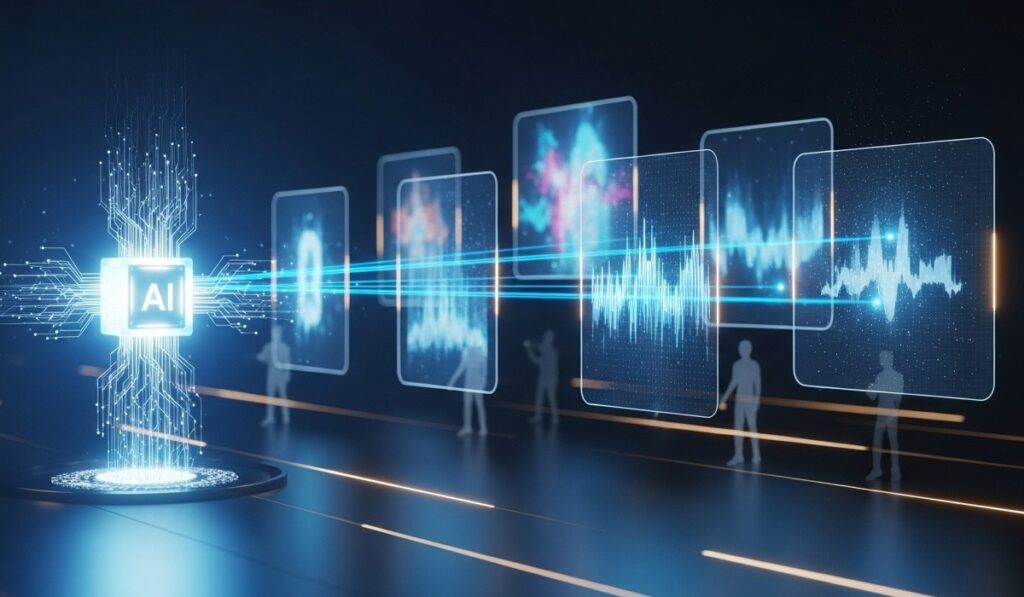
Using AI effectively means adopting new strategies. These tactics leverage AI’s speed and precision.
They move beyond basic targeting to create truly dynamic campaigns.
This is how smart marketers get a huge edge over their competitors.
Dynamic Ad Personalization Based on User Journey
This strategy serves up different ads based on where the user is in their journey.
A Top-of-Funnel (TOFU) user gets an educational ad.
A Bottom-of-Funnel (BOFU) user gets a discount offer.
The AI maps the user’s path and tailors the creative in real-time. This keeps the ad perfectly relevant at all times.
Smart Budget Optimization to Reduce Wasted Ad Spend
AI doesn’t just manage budgets—it optimizes them continuously. Budget allocation shifts toward:
- Highest-converting audience segments
- Best-performing creative variations
- Most efficient platforms and placements
- Optimal bid times and frequency
Google’s AI-powered Smart Bidding has reduced client CPA by an average 18% while maintaining conversion volume, according to recent case studies.
No manual intervention required—the algorithm learns and adapts.
AI Retargeting That Brings Back Abandoned Leads
AI retargeting doesn’t just serve repetitive ads. It recognizes abandonment patterns and serves strategic interventions:
- Someone browsing but not converting sees social proof
- Someone who viewed pricing but left sees a limited-time discount
- Someone who abandoned cart gets personalized product recommendations
- Someone who engaged but never converted gets testimonials addressing likely objections
This approach recovers 15-30% of abandoned potential revenue, depending on industry and audience quality.
So if your current ads are failing even after you tried multiple winning strategies suggested by ad gurus, try AI-optimized retargeting and see the difference.
Check out this detailed guide on how to turn low-performing ads into profit with AI.
Best AI Tools for Creating High-Converting Ads
You do not need to build your own AI tools!
The market is full of powerful, ready-to-use platforms. These tools are perfect for busy entrepreneurs and creators.
Copywriting & Creative Tools
Jasper, Copy.ai, and Writesonic generate persuasive headlines, body copy, and CTAs. These leverage advanced language models to produce conversion-focused variations within seconds.
Full AI Ad Platforms
AdCreative.ai and Smartly.io handle end-to-end campaign creation—from copy and creative generation through optimization and reporting. These platforms suit entrepreneurs and scaled teams.
Pixi AI’s AI video generator and AI graphic design tools complement these by creating visual assets that match algorithmically optimized copy.
AI Optimization Tools
Revealbot, Madgicx, and Albert.ai specialize in performance optimization, running advanced A/B tests and managing budget allocation across campaigns.
They help with bid adjustments and performance monitoring. They ensure your existing campaigns run at peak efficiency.
How to Start Using AI for Ads – Step-by-Step Framework
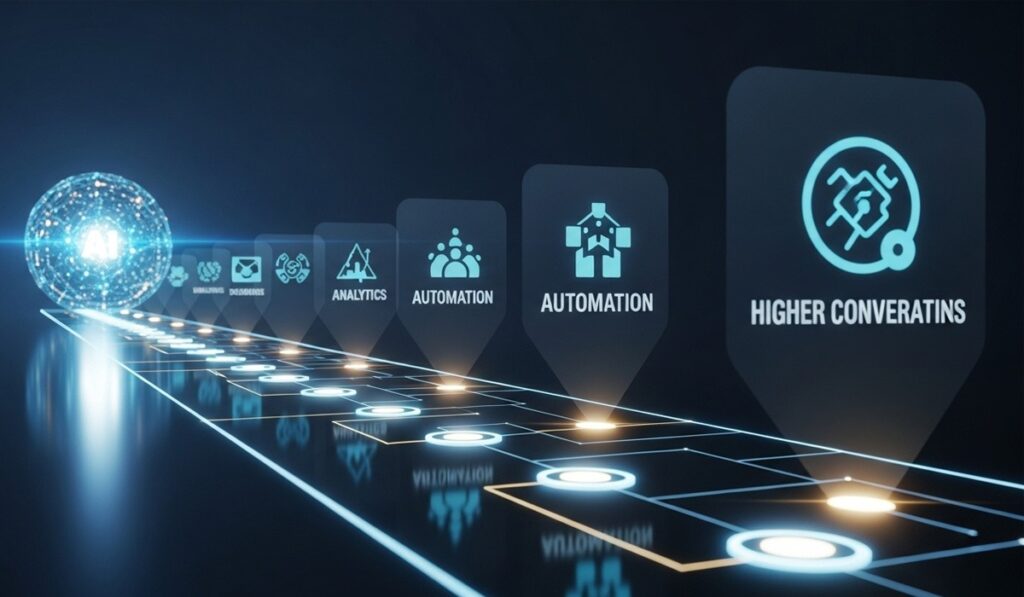
Ready to jump in? We have a simple three-step plan to get you started. You will be running smarter, higher-converting ads very soon.
Research Your Audience With AI Insights
Before creating anything, understand your audience deeply. Use AI tools to analyze:
- Who currently engages with competitors
- What content your target demographic consumes
- Which emotional triggers resonate
- Seasonal trends affecting your niche
Tools like Semrush and similar platforms provide AI-powered audience insights that inform all downstream decisions.
Set Up AI-Powered Campaign Structure for Success
Structure campaigns to enable AI optimization:
- Create multiple creative variations (headlines, copy angles, visuals, CTAs)
- Segment audiences by behavior, demographics, and intent
- Set clear conversion events for optimization
- Define realistic performance benchmarks
This structure lets AI test and optimize within guardrails.
Track and Optimize Conversion Metrics With AI
Monitor these key metrics continuously:
- Conversion rate (goal completions ÷ clicks)
- Cost per conversion (ad spend ÷ conversions)
- Return on ad spend (revenue ÷ ad spend)
- Click-through rate (clicks ÷ impressions)
AI dashboards flag underperformers and allocate budget to winners automatically.
Your job is to review trends weekly and provide direction; the algorithm handles execution.
Frequently Asked Questions (FAQs)
What is the average conversion rate increase with AI advertising?
AI-powered marketing can lead to an average conversion rate increase of up to 37%. Some companies even report a 40% increase with deep personalization.
Is AI-generated content or creative original?
Yes! Generative AI models, like the Phoenix foundation model at Pixi AI, create original visual content based on your prompts.
How does AI retargeting differ from standard retargeting?
AI retargeting is smarter because it uses predictive analytics. It predicts the likelihood of a conversion for each user. It only spends money targeting the leads most likely to come back and buy.
Can small businesses afford AI ad creation tools?
Absolutely! Many platforms, including Pixi AI, offer affordable SAAS subscriptions for small businesses.
Conclusion
Ad campaigns created and optimized by AI can convert 34% better, cost 60-80% less, and scale faster than traditional advertising. Waiting to adopt this technology means competitors capture market share you could own.
AI-generated ads combine three forces: algorithmic intelligence analyzing massive datasets, psychological principles embedded in persuasion, and real-time optimization that never stops improving.
Pick one campaign, apply AI ad generation principles, and track results over 30 days. You’ll likely see 2-3x improvement versus baseline performance—enough to justify scaling.
Ready to stop guessing on ads?
Explore Pixi AI’s suite of tools, starting with our AI video generator and AI graphic design platform.
The future of advertising isn’t just AI—it’s AI that understands psychology, masters data, and optimizes obsessively. That future is now.
